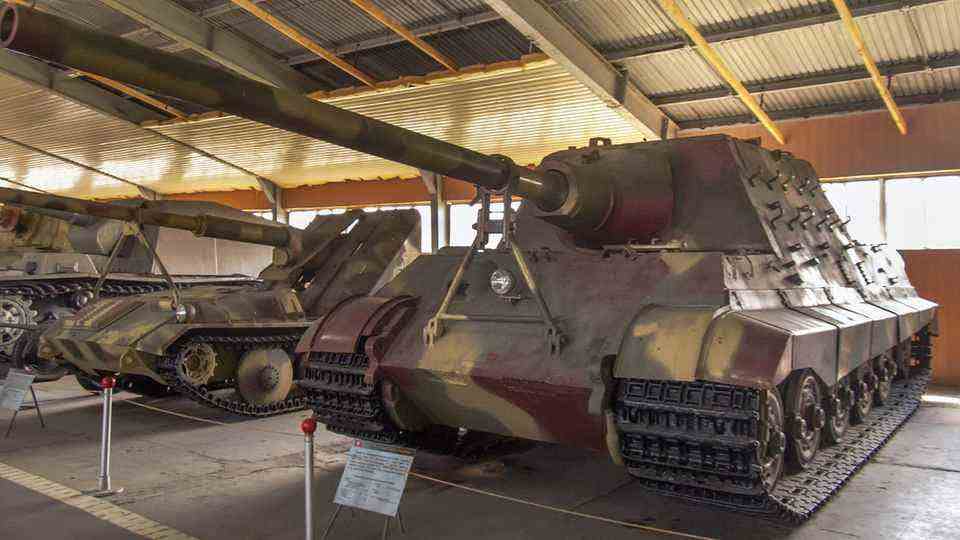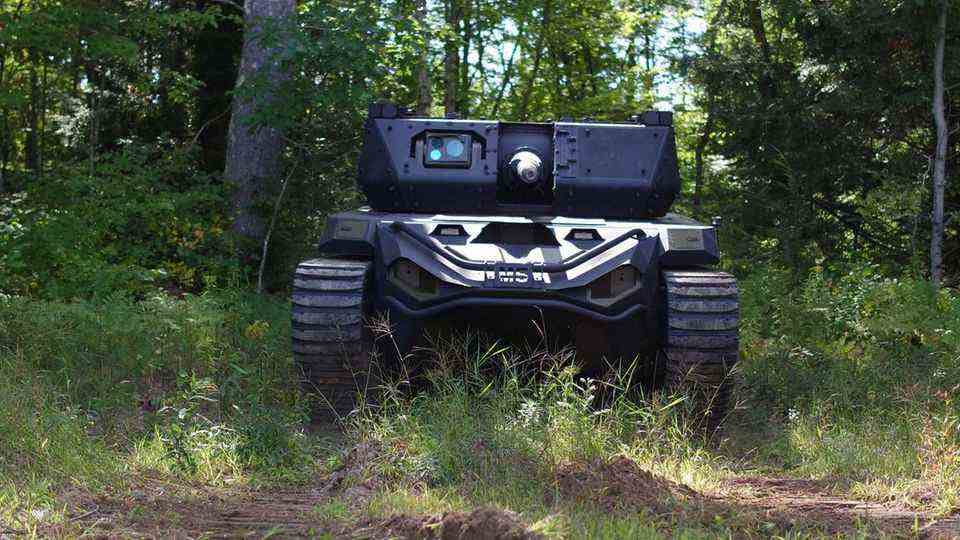Second World War
Jagdtiger – this tank legend suffered from massive overweight
The Jagdtiger could hardly be fought by other tanks
© Commons
During World War II, the Germans developed so-called tank destroyers; they did not have a rotating turret, but a larger cannon could be built onto the chassis. The Jagdtiger was the most powerful model.
Towards the end of World War II, the Wehrmacht fielded two very different tanks. One was the Hetzer mini-tank. It was small, could take advantage of any cover, had a solid gun—but was barely armored. And the other was the Jagdtiger – an absolute behemoth. It possessed the most powerful tank gun of any German tank and possessed the strongest frontal armor. The Jagdtiger could not be cracked from the front. The Jagdtiger was developed as a defensive tank for rearguard action by the Wehrmacht. The Jagdtiger was intended to stop the Allies’ newly developed heavy tanks from a long distance.
Extreme gun in World War II
The main weapon used was the 12.8 cm KwK L/55. Against them, the Tiger tank’s eight-eight was a lightweight. With a caliber of 12.8 centimetres, their projectiles weighed almost 30 kilograms, plus the propellant charge weighing 15 kilograms. Projectile and charge were separated, otherwise the two loaders could not have moved the projectiles. The 12.8 cm PaK 44d penetrated the armor of an American Sherman tank at a distance of three kilometers from every angle. The Sherman, on the other hand, had to come within a hundred yards and then try to grab the Jagdtiger from behind.
Unfortunately, the construction also had other superlatives to offer: the Jagdtiger weighed around 70 tons and was anything but inconspicuous at three meters high. It could best be characterized as a mobile bunker.
Too weak and too heavy
The chassis of the Tiger I tank was used for the tank destroyer. This heavy main battle tank had many technical features that made it popular with the crew. It was easy to steer without any effort, and the colossus could also be moved very sensitively – if the technology played along. However, even the Tiger was too heavy for the engine and transmission. The even larger Jagdtiger was even more immobile. He also developed a tremendous thirst for gasoline. And that at a time when the Wehrmacht was running out of fuel. The 700 hp of the engine was just enough for 17 km/h off-road. The length of 10 and the width of 3.5 meters made it difficult to maneuver without bumping into everything.
insignificant amounts
Only 88 tanks were made from February 1944 to the end of the war. The heavy Panzerjäger Battalions 512 and 653 were equipped with them. Due to the small number alone, the tank did not have a decisive effect on the war. The myth surrounding the Jagdtiger cannot be explained by its actual use, but by the extreme concept of the weapon.
On the other hand, it could hardly be fought by other tanks. The 653 lost 30 percent of its tanks to artillery fire and air raids, 70 percent had to be blown up due to failures, not a single one was shot down by an enemy tank.
Properly used, the cannon’s effect was terrible. Four Jagdtigers from 653 Panzerjäger Battalion arrived at Chaumont near Bastogne on December 23, more or less by chance. They wanted to continue to Bastogne to reinforce the Panzer Lehr Division. Since there were reports of Americans approaching, the tanks took up positions in a wooded area with a good view of the fields. Two hours later, the spearhead of Patton’s 3rd Panzer Army emerged and ran straight into the Jagdtigers’ line of fire. Within minutes, eleven Sherman tanks exploded.
Poor level of education
After the war, Otto Carius wrote about his missions with the Jagdtiger. Carius was one of the most dangerous tank commanders of the war, he became famous with the Tiger I. Despite the existing ailments, Carius was enthusiastic about the Tiger. He didn’t think much of the Jagdtiger. Most of his tanks failed due to technical defects.
In order to align the cannon, the 70-ton colossus had to be moved sensitively, which led to failures in the controls and the drive. Even at short distances, the cannon had to be supported if possible, otherwise its weight would destroy the bearings, making it impossible to align the gun.
Added to this was the general situation towards the end of the war. In previous years, the heavy tank divisions were assigned only the best people who had already proven themselves elsewhere. The sensitive and vulnerable Jagdtigers were manned by barely trained newcomers.
Carius was appalled by the rookie mistakes his commanders made. The will to defend also collapsed. Soldiers refused to fire on US troops fearing the airstrikes that would follow. Civilians betrayed the camouflaged positions of the giant tanks to the US Army.
The heavy tank destroyer battalion 512 formed the backbone of the defense of Iserlohn and Unna in the Ruhr basin. The commander Albert Ernst recognized the pointless resistance. Also because 300,000 civilians were trapped in Iserlohn with his troops. On April 16, he was the only German officer to surrender the city and his last remaining Jagdtigers to the Allies. During the capitulation, fanatical residents called Ernst a coward and spat on him.
Also read:
Brite auctions old tank – and finds 25 kilos of gold in the tank
“Lonely Panther” – the last tank duel at Cologne Cathedral
Only in propaganda was the first tank attack a huge success
The US robotic tank that came out of a reality TV show





